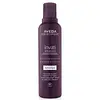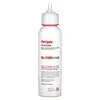What's inside
What's inside
 Key Ingredients
Key Ingredients

 Benefits
Benefits

 Concerns
Concerns

 Ingredients Side-by-side
Ingredients Side-by-side

Water
Skin ConditioningSodium Lauroyl Methyl Isethionate
CleansingSodium Chloride
MaskingMethyl Soyate
EmollientBabassuamidopropyl Betaine
CleansingSodium Methyl Cocoyl Taurate
CleansingCocamide Mipa
EmulsifyingGlycol Distearate
EmollientPropanediol
SolventCurcuma Longa Root Extract
MaskingPanax Ginseng Root Extract
EmollientEmblica Officinalis Fruit Extract
Skin ConditioningLauric Acid
CleansingGlyceryl Caprylate
EmollientLactic Acid
BufferingSodium Laurate
CleansingMethyl Trimethicone
Skin ConditioningArginine
MaskingSalicylic Acid
MaskingAcetyl Carnitine Hcl
Skin ConditioningSodium Gluconate
Skin ConditioningAcrylates/Dimethicone Copolymer
Skin ConditioningGuar Hydroxypropyltrimonium Chloride
Skin ConditioningMalt Extract
Skin ProtectingAdenosine Phosphate
Skin ConditioningCreatine
Skin ConditioningYeast Extract
Skin ConditioningCaffeine
Skin ConditioningDimethicone PEG-8 Polyacrylate
Polyglyceryl-10 Laurate
Skin ConditioningParfum
MaskingLinalool
PerfumingEugenol
PerfumingGeraniol
PerfumingCitronellol
PerfumingCitral
PerfumingBenzyl Benzoate
AntimicrobialLimonene
PerfumingPotassium Sorbate
PreservativePhenoxyethanol
PreservativeWater, Sodium Lauroyl Methyl Isethionate, Sodium Chloride, Methyl Soyate, Babassuamidopropyl Betaine, Sodium Methyl Cocoyl Taurate, Cocamide Mipa, Glycol Distearate, Propanediol, Curcuma Longa Root Extract, Panax Ginseng Root Extract, Emblica Officinalis Fruit Extract, Lauric Acid, Glyceryl Caprylate, Lactic Acid, Sodium Laurate, Methyl Trimethicone, Arginine, Salicylic Acid, Acetyl Carnitine Hcl, Sodium Gluconate, Acrylates/Dimethicone Copolymer, Guar Hydroxypropyltrimonium Chloride, Malt Extract, Adenosine Phosphate, Creatine, Yeast Extract, Caffeine, Dimethicone PEG-8 Polyacrylate, Polyglyceryl-10 Laurate, Parfum, Linalool, Eugenol, Geraniol, Citronellol, Citral, Benzyl Benzoate, Limonene, Potassium Sorbate, Phenoxyethanol
Water
Skin ConditioningOnsen-Sui
Dipropylene Glycol
HumectantCaprylic/Capric Triglyceride
MaskingCetearyl Alcohol
EmollientCetyl Alcohol
EmollientStearyl Alcohol
EmollientBrassicamidopropyl Dimethylamine
Skin ConditioningBehentrimonium Chloride
PreservativeBehentrimonium Methosulfate
Parfum
MaskingBehenyl Alcohol
EmollientGlyceryl Stearate
EmollientSteartrimonium Chloride
PreservativeQuaternium-33
Alcohol
AntimicrobialPentylene Glycol
Skin ConditioningPropylene Glycol
HumectantIsopropyl Myristate
EmollientPanthenol
Skin ConditioningPropanediol
SolventZinc Pyrithione
AntiseborrhoeicCitric Acid
BufferingButylene Glycol
HumectantSalicylic Acid
MaskingMenthol
MaskingPolyquaternium-10
Guar Hydroxypropyltrimonium Chloride
Skin ConditioningCaprylyl Glycol
EmollientLanolin Acid
CleansingEthylhexylglycerin
Skin ConditioningDisodium EDTA
Laurdimonium Hydroxypropyl Hydrolyzed Wheat Protein
Cnidium Officinale Rhizome Extract
Skin ConditioningPanax Ginseng Root Extract
EmollientSodium Citrate
BufferingHydrolyzed Soy Protein
HumectantHydrolyzed Keratin
HumectantZinc Chloride
AntimicrobialSorbitol
HumectantBelamcanda Chinensis Root Extract
Skin ConditioningSwertia Japonica Extract
Skin ConditioningGlycerin
HumectantCocos Nucifera Oil
MaskingGardenia Taitensis Flower
Skin ConditioningHydrolyzed Rye Phytoplacenta Extract
Skin ConditioningGlycine
BufferingPaeonia Suffruticosa Root Extract
Skin ProtectingSerine
MaskingGlutamic Acid
HumectantNymphaea Alba Flower Extract
Skin ConditioningSerenoa Serrulata Fruit Extract
Skin ConditioningHibiscus Sabdariffa Flower Extract
Skin ConditioningAspartic Acid
MaskingLeucine
Skin ConditioningFagraea Berteroana Flower Extract
Skin ConditioningCananga Odorata Flower Extract
PerfumingAlanine
MaskingLysine
Skin ConditioningArginine
MaskingTyrosine
MaskingPhenylalanine
MaskingUrea
BufferingLecithin
EmollientPolysorbate 80
EmulsifyingThreonine
Proline
Skin ConditioningValine
MaskingIsoleucine
Skin Conditioning1,2-Hexanediol
Skin ConditioningCeramide NP
Skin ConditioningHistidine
HumectantMethionine
Skin ConditioningCysteine
AntioxidantCysteic Acid
Skin ConditioningSodium Succinate
BufferingPlumeria Alba Flower Extract
Skin ConditioningPlumeria Rubra Flower Extract
Skin ConditioningBiotin
AntiseborrhoeicTocopherol
AntioxidantWater, Onsen-Sui, Dipropylene Glycol, Caprylic/Capric Triglyceride, Cetearyl Alcohol, Cetyl Alcohol, Stearyl Alcohol, Brassicamidopropyl Dimethylamine, Behentrimonium Chloride, Behentrimonium Methosulfate, Parfum, Behenyl Alcohol, Glyceryl Stearate, Steartrimonium Chloride, Quaternium-33, Alcohol, Pentylene Glycol, Propylene Glycol, Isopropyl Myristate, Panthenol, Propanediol, Zinc Pyrithione, Citric Acid, Butylene Glycol, Salicylic Acid, Menthol, Polyquaternium-10, Guar Hydroxypropyltrimonium Chloride, Caprylyl Glycol, Lanolin Acid, Ethylhexylglycerin, Disodium EDTA, Laurdimonium Hydroxypropyl Hydrolyzed Wheat Protein, Cnidium Officinale Rhizome Extract, Panax Ginseng Root Extract, Sodium Citrate, Hydrolyzed Soy Protein, Hydrolyzed Keratin, Zinc Chloride, Sorbitol, Belamcanda Chinensis Root Extract, Swertia Japonica Extract, Glycerin, Cocos Nucifera Oil, Gardenia Taitensis Flower, Hydrolyzed Rye Phytoplacenta Extract, Glycine, Paeonia Suffruticosa Root Extract, Serine, Glutamic Acid, Nymphaea Alba Flower Extract, Serenoa Serrulata Fruit Extract, Hibiscus Sabdariffa Flower Extract, Aspartic Acid, Leucine, Fagraea Berteroana Flower Extract, Cananga Odorata Flower Extract, Alanine, Lysine, Arginine, Tyrosine, Phenylalanine, Urea, Lecithin, Polysorbate 80, Threonine, Proline, Valine, Isoleucine, 1,2-Hexanediol, Ceramide NP, Histidine, Methionine, Cysteine, Cysteic Acid, Sodium Succinate, Plumeria Alba Flower Extract, Plumeria Rubra Flower Extract, Biotin, Tocopherol
Ingredients Explained
These ingredients are found in both products.
Ingredients higher up in an ingredient list are typically present in a larger amount.
Arginine is an amino acid that is important for human development. Your body uses is it to produce hair keratin and skin collagen.
As a cosmetic ingredient, Arginine has antioxidant properties and can also help repair damaged skin. This ingredient is derived either synthetically or from animals.
Arginine isn't fungal acne safe when used in the presence of other lipids (fats, fatty acids, oils, esters, etc). Oils and fats occur naturally within the skin, so take caution when using Arginine if you're prone to fungal acne.
Learn more about ArginineThis ingredient is derived from guar gum.
It is a conditioning ingredient, meaning it helps soften skin and hair.
Ginseng root is a well-loved ingredient in Asian skincare for good reason. It hydrates the skin, soothes irritation, and helps even out skin tone.
In traditional East Asian medicine, ginseng has been used for centuries both as food and as a healing remedy, and modern research continues to confirm its skin benefits.
One of the standout features of ginseng is its ability to improve blood circulation and oxygen delivery to the skin, bringing a fresh supply of nutrients to support overall skin health. It also has antioxidant and anti-inflammatory properties. This helps to protect your skin against damage from UV exposure, pollution, and daily stress.
Additionally, studies suggest that ginseng may help reduce hyperpigmentation by inhibiting tyrosinase, the enzyme involved in melanin production.
There are different types of ginseng used in skincare, and while they all share core benefits, their potency can vary.
Most products use fresh or white ginseng because it’s more affordable. However, red ginseng, produced by steaming the root, contains higher levels of ginsenosides, which are compounds with proven anti-aging effects. These ginsenosides help reduce the appearance of wrinkles and improve skin elasticity.
Note: All forms of ginseng are listed simply as “Panax ginseng” in ingredient lists. We recommend reaching out to the brand if you have questions about which type of ginseng is used in their ingredients.
For general antioxidant benefits, any ginseng extract will do, but for wrinkle care or firmer skin, red or fermented ginseng is often more effective.
In short, ginseng is a powerhouse ingredient that supports hydration, radiance, and resilience.
Learn more about Panax Ginseng Root ExtractParfum is a catch-all term for an ingredient or more that is used to give a scent to products.
Also called "fragrance", this ingredient can be a blend of hundreds of chemicals or plant oils. This means every product with "fragrance" or "parfum" in the ingredients list is a different mixture.
For instance, Habanolide is a proprietary trade name for a specific aroma chemical. When used as a fragrance ingredient in cosmetics, most aroma chemicals fall under the broad labeling category of “FRAGRANCE” or “PARFUM” according to EU and US regulations.
The term 'parfum' or 'fragrance' is not regulated in many countries. In many cases, it is up to the brand to define this term.
For instance, many brands choose to label themselves as "fragrance-free" because they are not using synthetic fragrances. However, their products may still contain ingredients such as essential oils that are considered a fragrance by INCI standards.
One example is Calendula flower extract. Calendula is an essential oil that still imparts a scent or 'fragrance'.
Depending on the blend, the ingredients in the mixture can cause allergies and sensitivities on the skin. Some ingredients that are known EU allergens include linalool and citronellol.
Parfum can also be used to mask or cover an unpleasant scent.
The bottom line is: not all fragrances/parfum/ingredients are created equally. If you are worried about fragrances, we recommend taking a closer look at an ingredient. And of course, we always recommend speaking with a professional.
Learn more about ParfumPropanediol is an all-star ingredient. It softens, hydrates, and smooths the skin.
It’s often used to:
Propanediol is not likely to cause sensitivity and considered safe to use. It is derived from corn or petroleum with a clear color and no scent.
Learn more about PropanediolSalicylic Acid (also known as beta hydroxy acid or BHA) is a well-known ingredient for treating skin that struggles with acne and clogged pores. It exfoliates both the skin's surface and deep within the pores to help clear out buildup, control oil, and reduce inflammation.
Unlike AHAs (alpha hydroxy acids), salicylic acid is oil-soluble. This allows it to penetrate into pores which makes it especially effective for treating blackheads and preventing future breakouts.
Salicylic acid is also known for its soothing properties. It has a similar structure to aspirin and can calm inflamed or irritated skin, making it a good option for acne-prone skin that is also sensitive.
Concentrations of 0.5-2% are recognized by the U.S. FDA as an over-the-counter topical acne product.
It can cause irritation and/or dryness if one's skin already has a compromised moisture barrier, so it's best to focus on repairing that before introducing this ingredient into your routine.
While salicylic acid does not increase sun sensitivity, it’s still important to wear sunscreen daily to protect your skin.
If you are looking for the ingredient called BHA or Butylated Hydroxyanisole, click here.
Learn more about Salicylic AcidWater. It's the most common cosmetic ingredient of all. You'll usually see it at the top of ingredient lists, meaning that it makes up the largest part of the product.
So why is it so popular? Water most often acts as a solvent - this means that it helps dissolve other ingredients into the formulation.
You'll also recognize water as that liquid we all need to stay alive. If you see this, drink a glass of water. Stay hydrated!
Learn more about Water